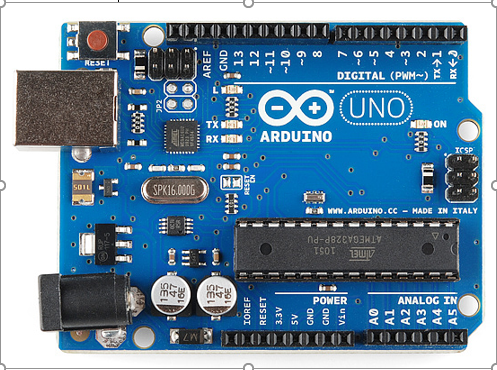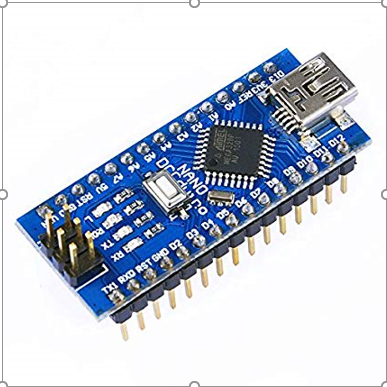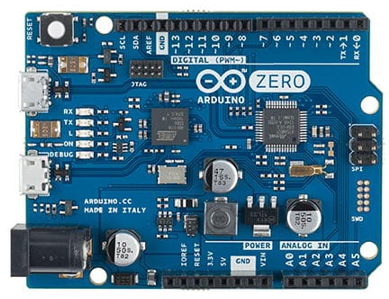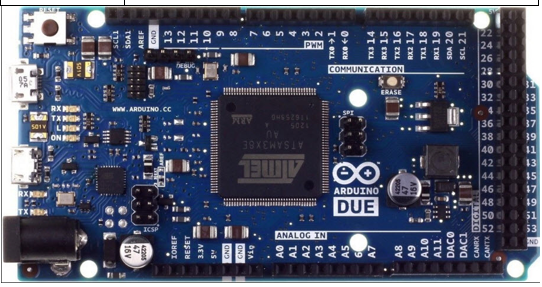There are a lot of microcontrollers that are released by the Arduino family, in this write-up, we will compare the most commonly used microcontrollers of the Arduino family.
Comparison of Arduino controllers
Arduino family contains many boards that have different microcontrollers and various other peripherals embedded on the board for easier use. A bootloader firmware (the program responsible for the initialization of the board) is written and all this is combined into a simple environment known as the integrated development environment(IDE). In IDE, the codes are written for different projects, these codes are known as sketches and all these descriptions combine together to produce a product known as Arduino.
There are many Arduino boards that are used for different purposes like for beginners Arduino Uno, then some are with advanced features like Arduino Mega and Due. We will discuss Arduino boards which are widely used by the Arduino community.
Arduino Uno
The Arduino Uno is configured on the ATmega328P which has a high performance on low power, moreover, Arduino Uno has 14 digital I/O pins, 16 mega Hz oscillator, a reset button, and a USB plug. Arduino Uno is the best-recommended board for beginners and it can be used for home automation, emergency lights control, and for medical instruments. The notable features of this board are; it has the ability of programmable brown-out detection, six sleep modes, and an internal calibrated oscillator.
The other features of Arduino Uno are:
| Microcontroller size | 8 bit |
| RISC architecture | It has 32*8 general purpose working registers and can have up to 16 MIPS throughput at 16 MHz |
| Memory | It has 32K bytes of in-system self-programmable flash program memory, 1Kb EEPROM, and 2Kb internal SRAM |
| Peripheral features | It has two 8-bit timers, 6 PWM channels, and an on-chip programmable comparator |
| I/O pins | 14 digital I/O & 6 Analog |
| Voltage | 2.2 to 5.5 volts |
| Temperature | -40 to +125 degrees |
| Speed | 0 to 16 MHz |
Arduino Nano
The Arduino Nano is configured on the ATmega328 and from the name it is being cleared that this board is small in size. Arduino nano has dedicated pins by which it can be connected to the breadboard directly without using the connecting wires and also it has no port for a power jack, but a small USB port is available for the power supply. Arduino nano is also the recommended board for beginners and it can be used for taking inputs from different sensors.
The other features of Arduino Nano are:
| Microcontroller size | 8 bit |
| RISC architecture | It has 32*8 general purpose working registers and can have up to 20 MIPS throughput at 20 MHz |
| Memory | It has 4/8/16/32KB of in-system self-programmable flash program memory,256/512/512/1 KB EEPROM, and 512/1K/1K/2KB internal SRAM |
| Peripheral features | It has two 8-bit timers, 6 PWM channels, and an on-chip analog comparator |
| I/O pins | 22 |
| Voltage | 1.8 to 5.5 volts |
| Temperature | -40 to +85 degrees |
| Speed | 0 to 20 MHz |
Arduino Zero
The Arduino Zero is configured on the SAMD21 by Atmel and it is loaded with some advanced features because of which it is widely used in wearable glasses, robotics, and industrial automation. Arduino zero has a special feature of EDBG(Atmel’s Embedded Debugger) which is used as a debug interface, so the users do not need any additional software to debug it. Arduino zero can be used with the relays, servos, motors and can be interfaced with other devices like Raspberry Pi.
The other features of Arduino Zero are:
| Microcontroller size | 32 bit |
| Memory | It has 256 KB of in-system self-programmable flash program memory and a 32 KB internal SRAM only |
| Peripheral features | It has a touch controller and 32 bit CRC generator |
| I/O pins | 20 |
| Voltage | 3.3 volts |
| Temperature | -40 to +85 degrees |
| Speed | 0 to 48 MHz |
Arduino Due
The Arduino Due is the first released board of Arduino on 32 bits and configured on the Atmel SAM3X8E, moreover, Arduino Due has 54 I/O pins, 84 mega Hz clock, a reset button, a JTAG header, and a USB plug. Arduino Due has been used for high-power Arduino projects because of its high power architecture.
The other features of Arduino Due are:
| Microcontroller size | 32 bit |
| Memory | It has 256 to 512Kbytes of in-system self-programmable flash program memory,16Kb ROM, and 32 to 100Kb internal SRAM |
| Peripheral features | It has Up to 4 USARTs, Up to 8-channel 16-bit PWM channels, and a Register Write Protection |
| I/O pins | 66 (54 digital and 12 analog I/O pins) |
| Voltage | 3.3 volts |
| Temperature | -40 to +125 degrees |
| Speed | 0 to 84 MHz |
Arduino Mega
The Arduino Mega is configured on the ATmega2560 and it has 54 digital I/O pins, 16 mega Hz clock, a reset button, an ICSP header, and a USB plug. It can be used on an industrial level for motor, servos, and relays control, moreover, the special features of this board are; it has the ability of programmable brown-out detection, Six sleep modes, and an Internal calibrated oscillator.
The other features of Arduino Mega are:
| Microcontroller size | 8 bit |
| RISC architecture | It has 32*8 general purpose working registers and can have up to 16 MIPS throughput at 16 MHz |
| Memory | It has 64K/128K/256Kbytes of in-system self-programmable flash program memory,4Kb EEPROM, and 8Kb internal SRAM |
| Peripheral features | It has two 8-bit timers, 4 eight-bit PWM channels, Capacitive touch buttons, sliders, wheels, and an on-chip analog comparator |
| I/O pins | 54 digital I/O pins and 16 analog input pins |
| Voltage | 5 volts |
| Temperature | -40 to +125 degrees |
| Speed | 0 to 16 MHz |
Conclusion
Arduino family has introduced a number of microcontrollers which are for different purposes like some are designed for beginners level projects, the others are for advanced level projects, and for industrial-level projects. In this write-up, the comparison is made among the widely used microcontrollers of the Arduino family that are Arduino Uno, Nano, Due, Zero, and Mega on the basis of their technical specifications.





